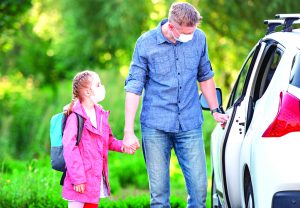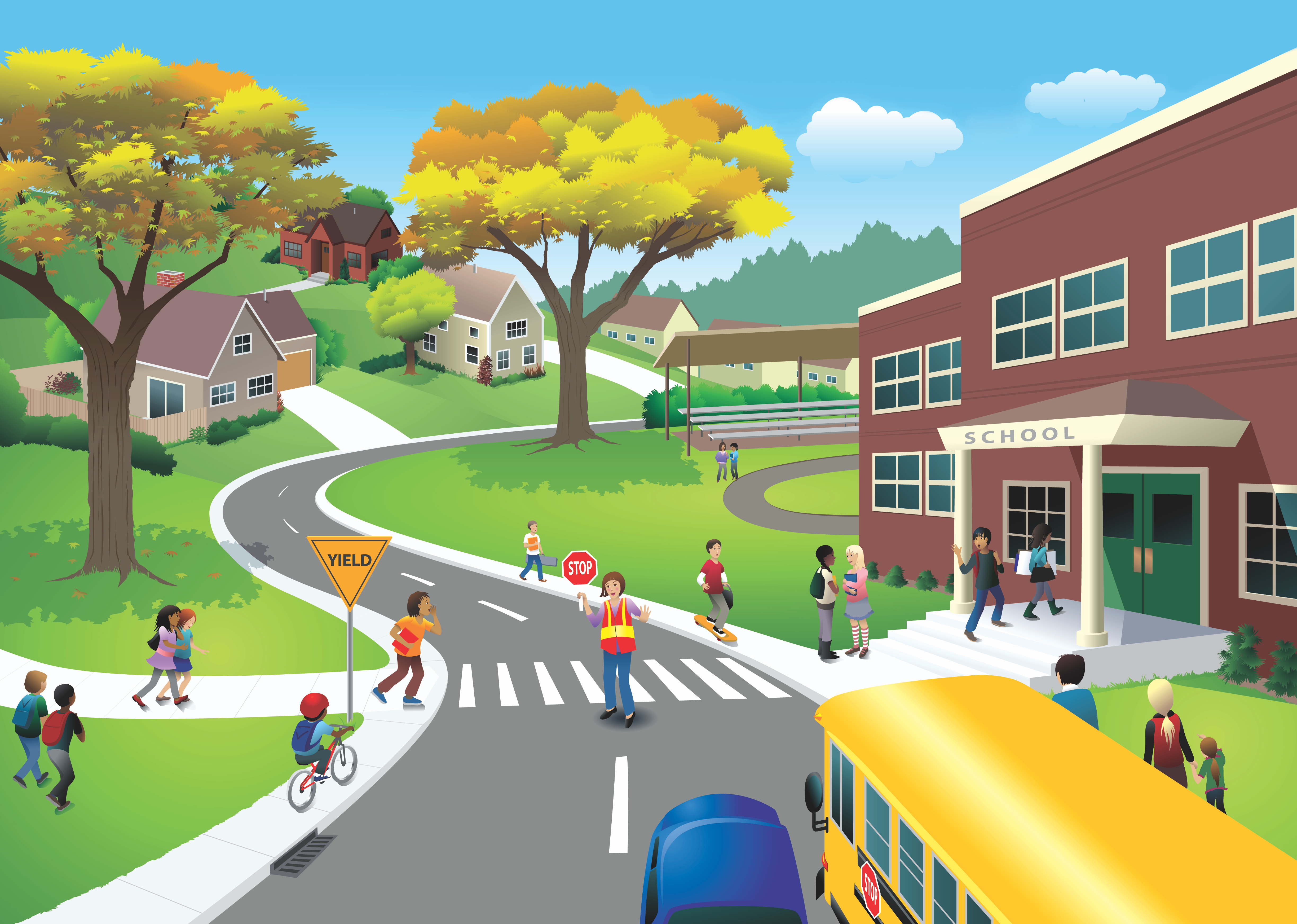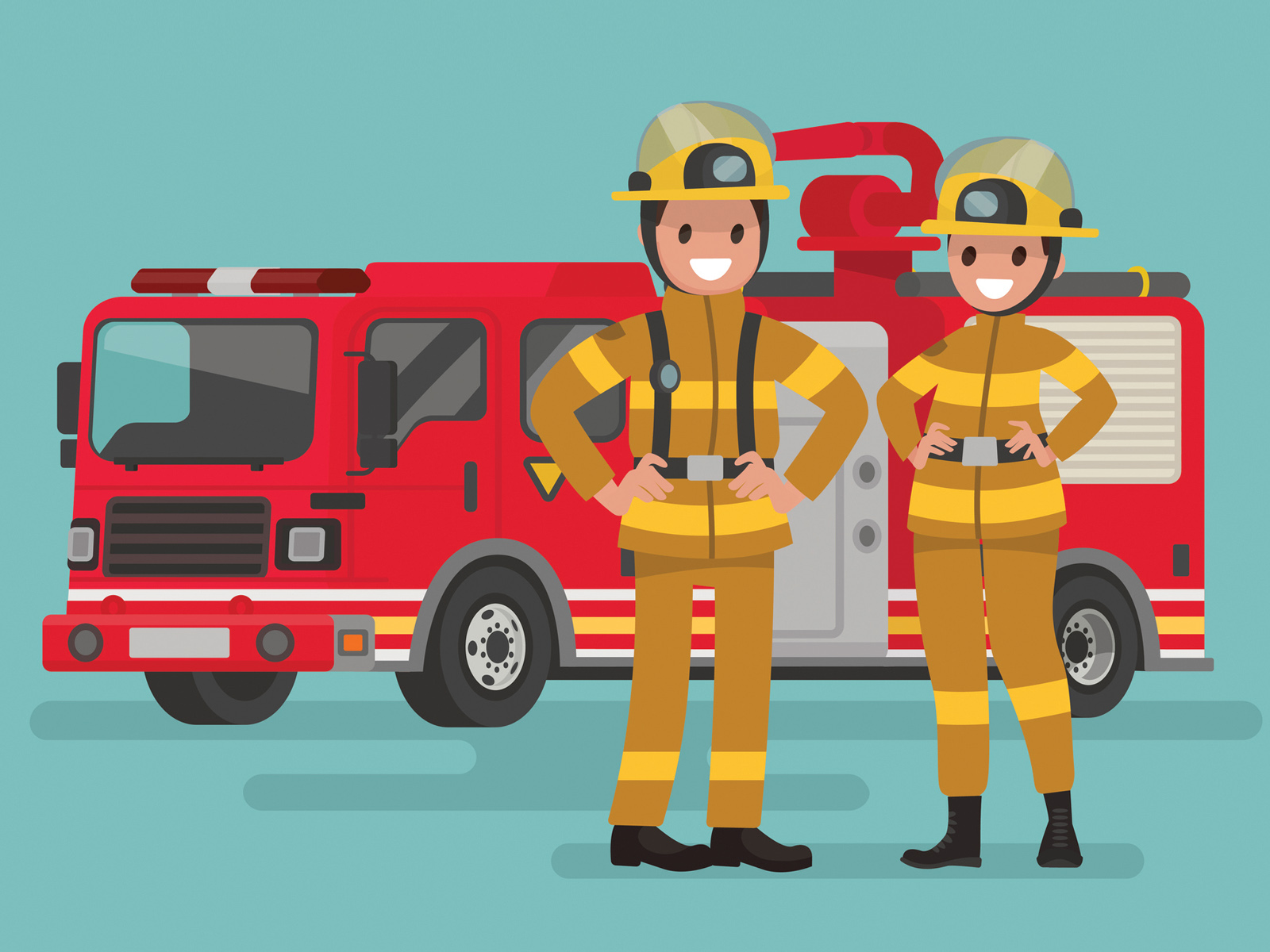School zones have changed a lot in the last decade. Today, nearly three quarters of children are driven to school, which means there has been a significant increase in vehicle traffic to school zones—bringing with it more pollution and more unsafe driving behaviours.
The safety of our children, and all road users, in school zones has to be a greater priority because, according to CAA polling in 2019, half of Canadians say they witnessed a distracted driver in a school zone and 6 in 10 say there are more unsafe driving practices in school zones today than in the past citing speeding, illegal parking or stopping, texting and driving and other types of distracted driving as the top concerning activities.
50 million – Number injured or disabled in crashes every year. WHO
Getting to school safely
Children get to school in a variety of ways such as walking, biking, on the school bus, or by car. Below are CAA’s tips to keep children safe on their way to school.
When driving your kids to school, look out for school zones and obey speed limits.
Be sure to wait until pedestrians and crossing guards are safely on the sidewalk before driving on. Don’t drop off and pick up your kids on the opposite side of the street. Also, keep an eye out for children darting out from between parked cars.
Watch out for school buses. As a driver it is important to drive cautiously around school buses and know the provincial laws drivers must obey when behind or passing a school bus (ex: stopping up to 20 meters away when it’s lights are flashing). Not stopping for a school bus can result in a hefty fine.
If you’re walking your kids to kindergarten or primary school, decide on the route together and encourage them to stay alert and keep phones and other distracting gadgets in their backpacks. Be sure to point out crosswalks, stop signs, and family’s or friends’ homes. And, when kids and teens are walking on their own, make sure they buddy up with a sibling or friend for a safer and more fun way to walk to school.
45% – The amount helmets reduce fatal and serious head injuries. WHO
Curb distracted driving
Unsafe behaviours behind the wheel are a hazard year-round, but become more dangerous when kids are in school. In a recent CAA survey, parents with young kids reported they have seen an increase in unsafe driving practices in school zones. Help keep everyone safe with these easy ways to avoid distracted driving.
Have time on your side. The number one thing we can all do to be safer is give ourselves enough travel time to get to our destination so we don’t have to rush. Time is your friend, so try to do what you can to give yourself some extra minutes— whether it’s waking up a bit earlier, planning out a more efficient route, or getting some tasks done the night before.
Plan ahead. Set the GPS and review all maps and directions before heading out. If you’re unsure about where you’re going, Google directions or call for instructions while you’re still in the driveway. It can be tempting to do this while you’re moving, but even hands-free calls have been linked to higher crash and near-collision rates.
Before driving off. Make sure the kids are in their car seats or buckled up, and have any items they might need in reach, including something to drink or play with. Stow and secure loose objects like your bag and cell phone so you’re not adjusting them if they shift while you’re driving. Do daily tasks like makeup, shaving, and drinking your coffee before you leave home.
While driving. Remember that distracted driving is any activity that lessens your focus on the road. Let your calls go to voicemail and don’t text, use apps or read emails. Checking a text for only five seconds means that at 90 kilometres per hour, you’ve travelled the length of a football field blindfolded.
Slow down in school zones. Students are walking, biking, and being driven to school so keeping a watchful eye, before and after school, will help avoid dangerous situations and keep everyone safe. And finally, watch for CAA School Safety Patrollers—there are more than 70,000 youth volunteers nationwide who ensure that their peers remain safe while travelling to and from school.
Source: CAA School Safety Patrol
September – The most dangerous month for pedestrian fatalities. Transport Canada

Make getting the day started a breeze.
Smooth days begin with stress-free mornings. Learn how to stay calm and organized with these practical tips that will get all of you up and on you way.
- Try DIY breakfast. Reduce time in the morning by simplifying breakfast. Set out some plates and cereal, chopped fruit, bread, cheese and yogurt to let the kids serve themselves, or keep these items on lower shelves in the fridge so little ones can access everything they need.
- Start a launch pad. Organizing experts say having a designated spot in your entryway for things like the kids’ lunch boxes, backpacks, textbooks, permission slips and coats is a great way to keep things tidy and to make sure no one forgets anything. The launch pad can be a basket, bench or other container, and it helps if each child has their own.
- Plan your route. School zones are becoming more dangerous. According to a recent CAA survey, the top two hazardous driving behaviours that motorists perform in a school zone are speeding and distracted driving. For a smoother morning, try parking a couple of blocks away and walking the rest of the way with your children. You and your kids will also get an extra dose of exercise. Help reduce traffic by finding alternative ways to school. Plan a safe route to walk or bike.
- COVID-19 risks. Trying to follow government guidelines during the pandemic has often caused frustration and difficult behaviour and stress at home. Establish a pre-exit and pre-entry routine for all family members and visitors when it comes to putting masks on and off, washing hands and wiping down personal items on a regular basis. Find clever ways to measure the 6ft social distance that makes it easier to remember (distance if daddy were to stretch out on the ground, or the length of the dogs leash). Explain to your children that safety and being careful is everyone’s number one and that, unfortunately, everyone is in the same boat right now. Some parents have created special hand washing songs, custom designed masks with kids names on them, and games to break the COVID drudgery.
- Using drop off zones. If you not opting to home-school, you’ll likely encounter varying days and starting times. Always check the school or activity programs special drop off zones for kids living with disabilities. Follow the rules but don’t be afraid to speak up if the systems are not working for you and your child.
35% – Reduction of child deaths with mandatory child restraints. WHO














